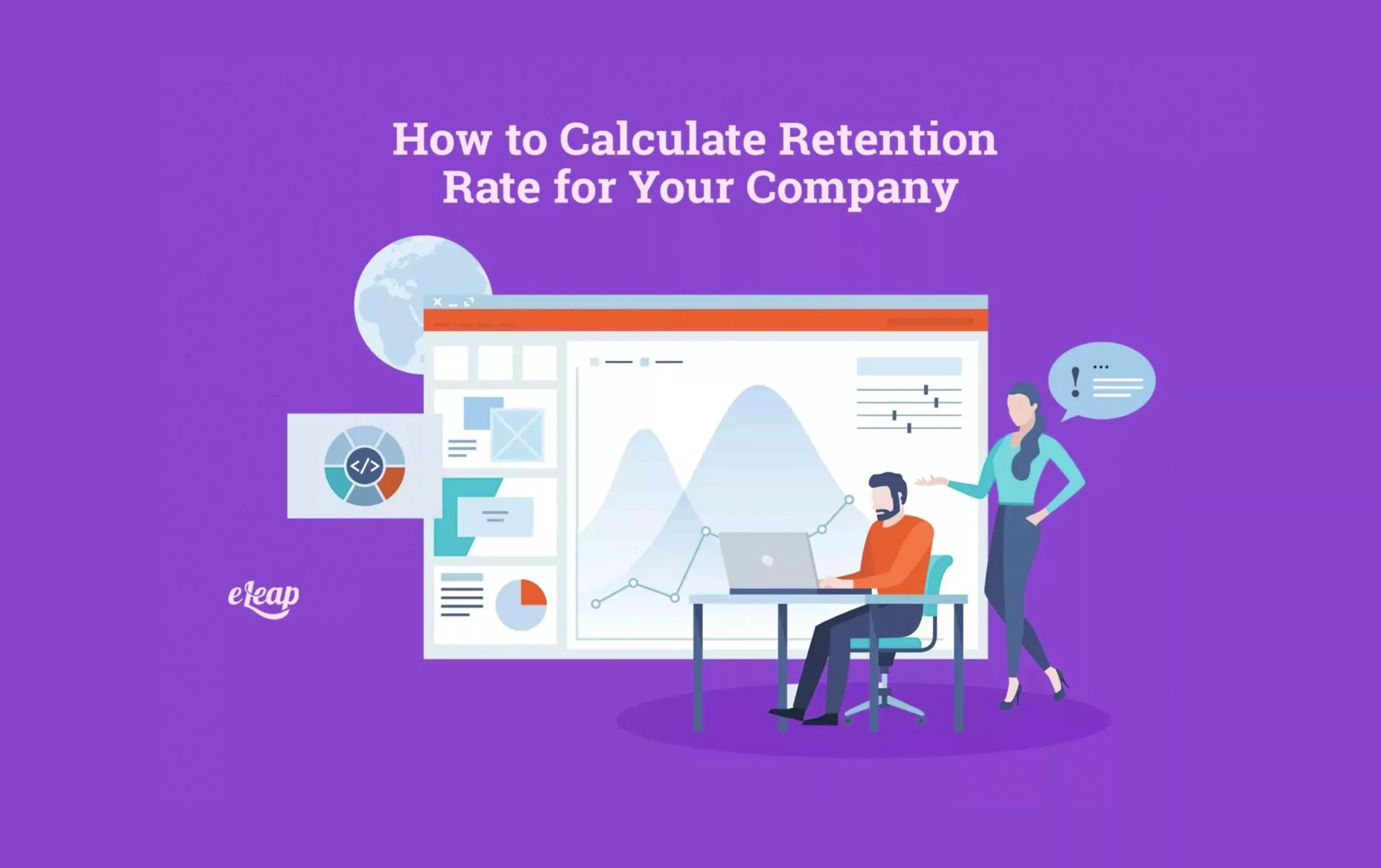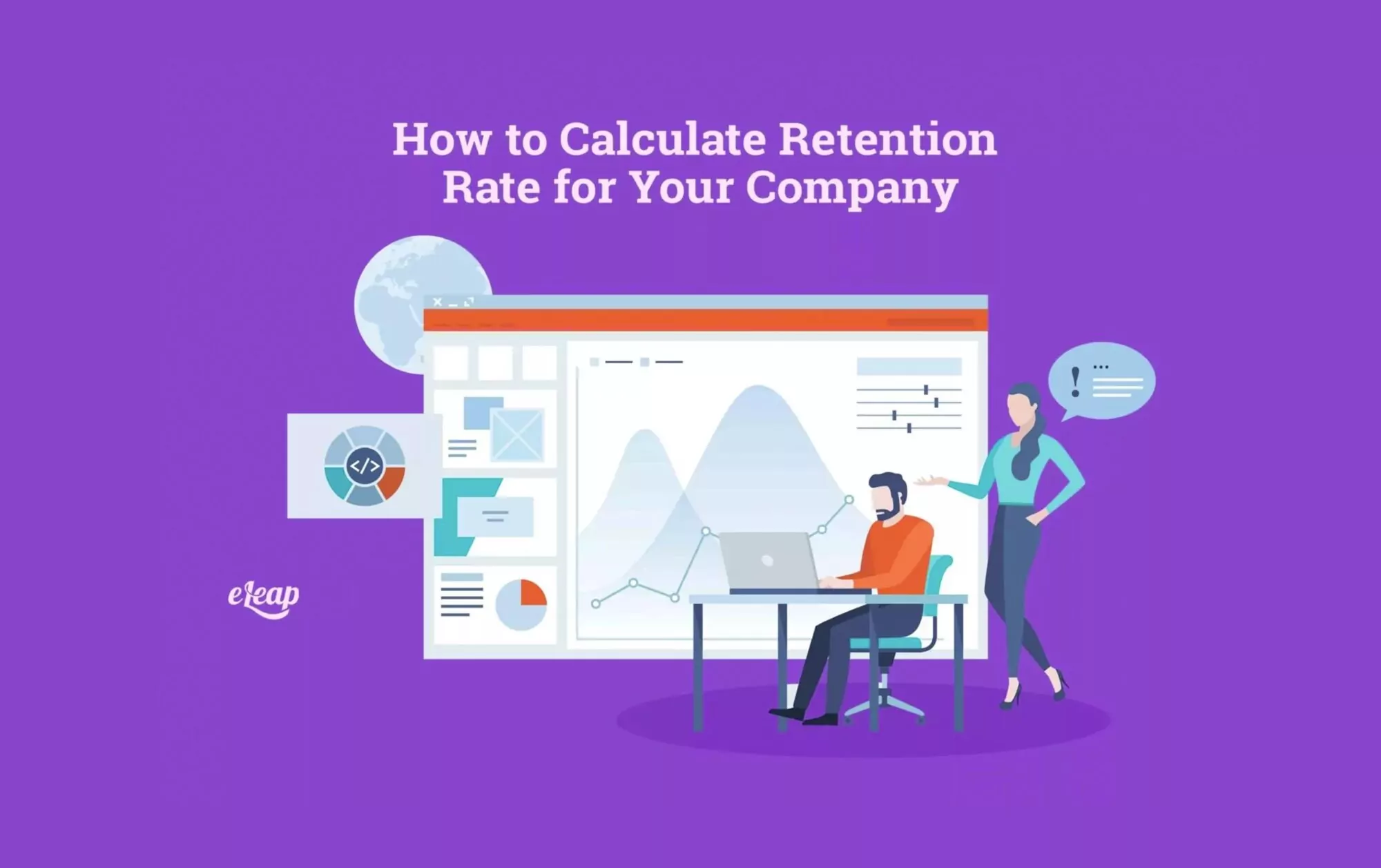How to Calculate Retention Rate for Your Company

Knowing how to calculate the retention rate of employees is one of the most important ways that a company can gauge how happy its employees are and how well the business serves the needs of its team members. When employees are satisfied, respected, and valued (and when they know this), they are more likely to put their best efforts forward to serve customers and the company with positivity.

An employee/employer relationship is like that of any other type in that when both parties are satisfied, have their needs met, and engage as mutual beneficiaries, the parties are likely to want to continue. Calculating employee retention rate gives employers a metric on which they can understand how many of their employees feel satisfied at the company.
There must be a deeper understanding than just the “Over 85% of our employees stay on after one year,” type of data, though. Managers and the human resources team need to understand why people choose to stay and why they leave.
Every time someone leaves the company, it isn’t necessarily because they have a negative view of the management or their environment, either. People leave jobs because of various life situations, such as having children, moving, or illness, as well as desiring to move on to something different or needing more than the company can provide. This is another example of why calculating employee retention rate and also getting concrete, specified feedback about how the employee felt while at the company and why they are leaving can help create a bigger, clearer picture.
Don’t fall into the trap of thinking that because people stay with a company that they are 100% satisfied, though. People need to work, and in most places in the United States, families depend on two incomes to continue living the lifestyle that they are accustomed to. In certain fields or geographical areas, employment isn’t readily available at every turn. This means that people often stay in jobs where they aren’t truly happy, fulfilled, or respected. It could be too much work to find another job, they might fear starting over and making less money, or perhaps they don’t want to compete with the younger population that is filling roles in their field.
How to Calculate Retention Rate in Real-Life
Calculating employee retention rate is the first step to understanding why some employees stay and why others leave. Then, the company can delve deeper into people’s concrete reasons and decide how they can improve the work environment, benefits, perks, communication, scheduling, collaboration, and other areas which make up employee satisfaction and desire to stay in a position or with a business.
This task isn’t optional—not as long as you want to utilize your resources well and not waste time, money, and labor looking for new team members every time you turn around. However, once you figure out a way for gathering this data seamlessly and using it to your advantage, it won’t seem like “one more task.” It will blend into your management tasks easily and soon you won’t be able to remember how you functioned without using the information. You’ll also be able to concentrate more of your efforts on the other areas of running your business, rather than hiring and re-training, which gives you more time and resources to heighten profits.
There’s a flip side to each coin; you could concentrate on employee turnover (how often or how many employees you lose) to see what your business should stop doing, or you can concentrate on employee retention rate (how many people stay on board) and use that to understand why people stay with your business. But how do you calculate this employee retention rate?
First, you’ll need to decide what timeframe you are looking at for retention. Is it the first three months? A year? Five years? Each of these will have unique concrete information to go along with the initial data, too, to help you understand why the retention numbers show what they do.
Most companies calculate their retention rates each year. And a year is a solid, significant benchmark. However, there are other opportunities for understanding that are missed when this is the only timeframe that you look at.
Is your business seasonal? If your company is in the hospitality industry in the middle of a tourist town, you probably have plenty of employees that come on board for the summer (or winter) and then head out. (Which might also be what you need, if your client base slows down in the off-season, too.) This doesn’t mean that your business practices aren’t fostering employee satisfaction, though. You’d need to look at whether people stay for the entire season and whether they come back year after year.
Contract and benefits renewals are also important times during which you should look at trends. People might stay until they are up for renewal to gain the maximum amount of benefits that they’ve earned, simply waiting to resign until they can cash out their stock options or retirement without penalty. Or, if they don’t receive the raise, bonus, or promotion that they were asking for and then leave, you can infer that they didn’t stay on as long as they did because they were happy, but because they were waiting for something more.
If you look at monthly trends instead of waiting for each annual calculation period to roll around, you can take heed of certain warning signs and implement solutions before the problem turns into losing any more employees.
Now that you’ve decided on your time frame, gather the data surrounding how many employees you had on board at the beginning of the chosen period and how many of them stayed with you. (You shouldn’t include any new hires in this calculation because that would skew your numbers toward the positive, and you want real, honest data.)
The calculation will look like this: X ÷ Y x 100 = R, where:
- X equals the number of employees who stayed on board with your company during the entire period of your calculation.
- Y equals the number of people employed with you on the first day of the timeframe.
- R equals the retention rate.
For example, let’s say you have 85 people on your team on May 30th, Memorial Day, the beginning of the summer season. By Labor Day, you have 63. Divide 63 by 85 to get .7411. Multiply by 100 to get your summer retention rate of 74.1%
Okay, but what do you do with this information?
How to Improve Your Retention Rates
You want to keep more people on board; that’s the bottom line. How do you do this? You need to start with hiring the right people. Create a culture that embraces particular values, and hire those who share the same vision. Then, invest in them until they become leaders. Show your appreciation and respect for these team members with both financial and non-monetary compensation.
Hiring new people not only costs a great deal of money in recruiting, onboarding, training, and time, but it also creates division in the community of your office. People need time and opportunity for connection to create relationships that allow for deep collaboration and trusted teamwork. When others in the company see people leaving because they aren’t satisfied, it can breed discontent and doubt, which is a cycle that you want to nip right in the bud.
It’s not just about keeping employees on as a whole, either. You want to focus specific efforts on different levels of team members, too. The leaders at the top of the company hierarchy have vast amounts of knowledge that they can use to help train and guide new employees as they get their bearings about them. You’ve invested years (maybe even decades) into these leaders’ jobs and roles within your company, so use that to your advantage! Don’t lose them over small issues that could be easily solved.
Make sure that you are giving your new employees solid attention, too. No one can make it to become a 20-to-30-year company veteran unless they get through the initial grunt years, and most people won’t want to get through that time unless they feel that they are supported and encouraged. People not only need to see that there is a higher, better space for them down the road (and that there is room for everyone there), but that the people who have climbed the ranks are glad to be there and still respected.
Overall Benefits of Calculating Employee Retention Rate
All the benefits of keeping employees on staff longer with less turnover are connected. When you show your employees that you care about and value them, they are more likely to engage with each other, their work, and your client base. This engagement creates efficiency and higher profits, allowing you to provide more benefits to your employees, which continues the cycle of them getting deep satisfaction from their work.